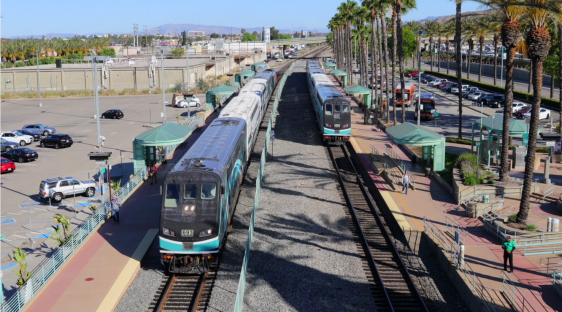At the heart of many of our discussions about sustainable transportation, when you get down to it, is the issue of justice.
Many times the injustice is plainly egregious. We see it every time a transit agency, with all the community benefits it provides, is forced to grovel for every buck, while state DOTs hand out dollars for highway expansions like they're Chiclets. Or in the high rates of asthma that city kids suffer, in part, as a result of well-off SUV-driving commuters.
One of the under-appreciated injustices, it has always seemed to me, is that cyclists are forced to wait behind cars, breathing in poisonous exhaust, while the person creating the pollution sits inside a tin can full of filtered air (although that air also has its share of poisons).
So kudos to Portland State University's Civil and Environmental Engineering Department for taking a look at the issue of air quality as it affects cyclists. Researchers in the department recently released a study comparing the amount of fine particle pollution inhaled by cyclists riding in regular painted bike lanes to the exposure of cyclists riding on separated cycle tracks.
Jonathan Maus at Bike Portland files this report:
The findings of this study show a cycle track roadway design may be more protective for cyclists than a traditional bicycle lane in terms of lowering exposure concentrations of ultrafine particles... Based on these initial findings, understanding roadway and traffic effects on exposure levels can help guide bicycle facility design and pinpoint locations in which mitigation of exposure levels by placement of facilities such as cycle tracks may be most important.
Traffic measurements showed the exposure concentration differences to be greatest at times of highest traffic volumes, emphasizing the importance of mitigation techniques in areas with simultaneously high volumes of motor vehicle and bicycle commuters.
The research team will present its findings at the Transportation Research Board's annual conference in D.C. in January. Let's hope, for the sake of our lungs, traffic engineers across the country are listening attentively.
Elsewhere on the Network today: Cap'n Transit reports on the failure of New York City's commuter van program, designed to take the place of recently closed bus routes. Write of Way analyzes Chicago's GO TO 2040 long-term plan from the perspective of active transportation. And Decatur Metro uncovers some outdated zoning laws requiring a minimum floor area coverage in the city. I wonder how many communities have a similar law on the books that warrant revisiting.






